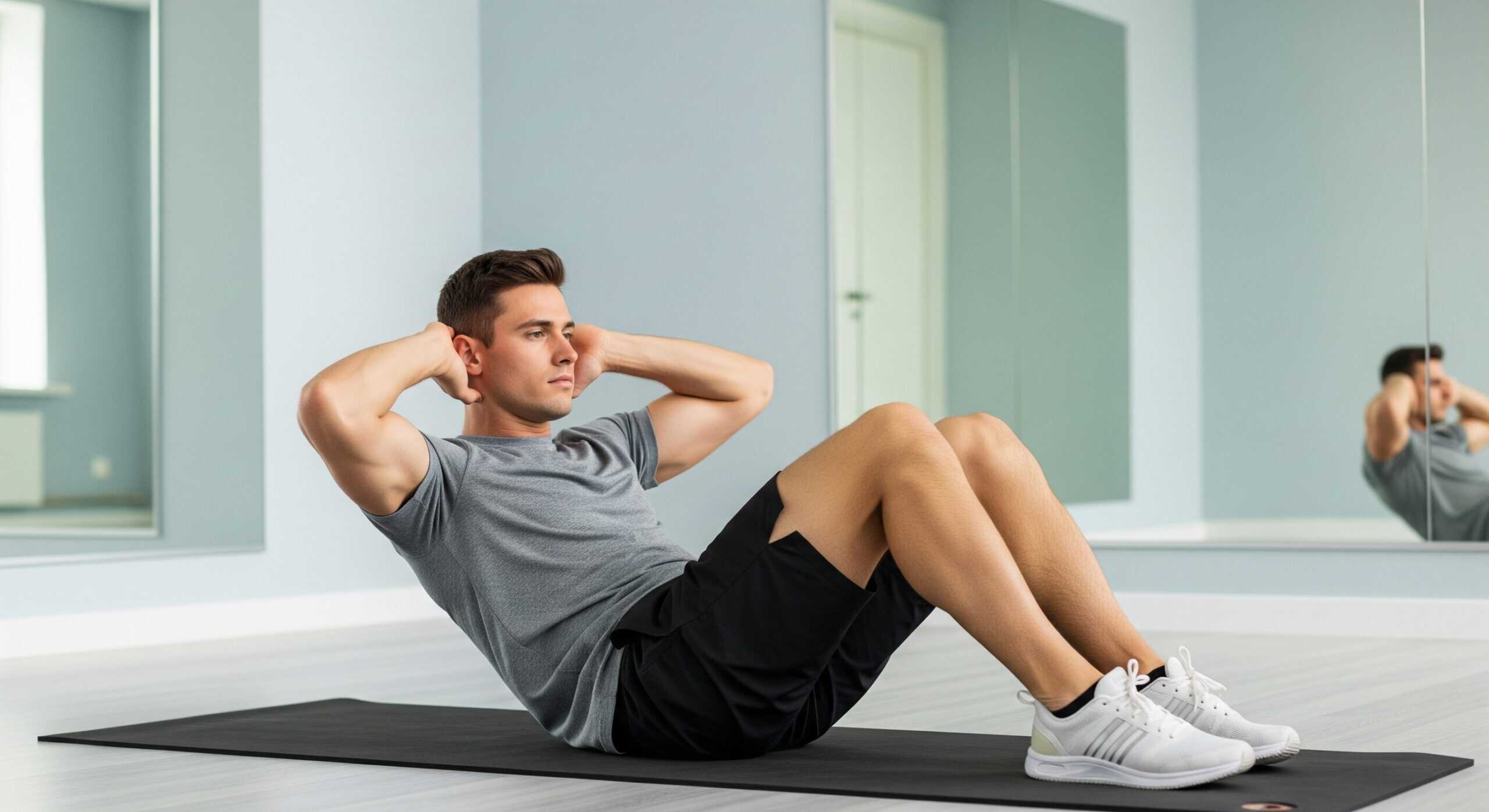Anterior Pelvic Tilt (APT) is a postural issue becoming more common as our lifestyles become increasingly sedentary. Knowing which exercises could exacerbate this forward tilt of the pelvis is as crucial as understanding the condition itself.
In this article, we’ll pinpoint the exercises that those with APT should avoid and offer a selection of beneficial alternatives to foster better posture and reduce discomfort.
What is an Anterior Pelvic Tilt?
APT is a postural issue where the pelvis tilts forward, causing an exaggerated curve in the lower back. This can lead to a distinctive appearance: a protruding belly and a more pronounced back arch. Beyond aesthetics, APT can contribute to discomfort and chronic back pain, making it a condition to take seriously.
What Causes Anterior Pelvic Tilt?
Our modern lifestyle is often the mastermind behind this tilt. Consider the hours spent curled over laptops or cradling smartphones. Each moment spent in these positions is like a potter’s hand, gently but persistently moulding the clay of our bodies into a new shape. And not always a desirable one.
- Prolonged Sitting: When we sit, our hips bend, and our hip flexors – the muscles that run from the thighs to the lumbar spine – shorten. Over time, like an unused rubber band, these muscles lose their elasticity and pull the pelvis into the tilt.
- Incorrect Sitting Posture: In an attempt to ‘sit up straight,’ many overcompensate, arching the back into a caricature of good posture. This over-arching is the body’s misguided attempt to correct a slouch, but it only further engrains APT.
- Incorrect Standing Posture: Standing may seem like a simple act, but done incorrectly, it’s another piece of the puzzle. Without a conscious engagement of the core and glutes, the pelvis can drift into an anterior tilt, setting the stage for discomfort and dysfunction.
Exercises to Avoid
Certain exercises can unintentionally strengthen the muscles that pull the pelvis into an anterior tilt, worsening the condition.
- Sit-ups and Crunches: Despite being core-focused, these exercises often engage the hip flexors, can increase tightness in the hip flexors and lower back, reinforcing the tilt.
- Leg Raises: Any variation of leg raises can activate the hip flexors, which is counterproductive for those with APT.
- Hip Flexor-Dominant Exercises: If you’re feeling a workout in your hip flexors or thighs, it’s likely not APT-friendly.
Safe Exercise Alternatives
When correcting APT, the exercises you choose should support a neutral pelvis and avoid putting your body into an APT position. Here are some effective alternatives:
- Modified Planks: Ensure you perform planks with a posterior pelvic tilt to avoid reinforcing APT.
- Neutral Spine Core Work: Opt for exercises that maintain a stable pelvis and spine alignment and avoid hip flexion.
- Hip Flexor Stretches: Incorporate stretches for the hip flexors to alleviate tightness and promote a more balanced posture.
- Donkey Kicks: This exercise targets both the glutes and hamstrings, which is beneficial since hamstrings can often be weak in individuals with APT. Keep your core engaged and hips square to the ground during the movement.
- Glute Bridges: Glute bridges can be performed with or without weights for strengthening the posterior chain. They help reinforce the glutes and hamstrings, counterbalancing the anterior pelvic tilt.
- Squats with Proper Form: Squats are excellent for strengthening the glutes, which helps counteract the forward pull of the tilted pelvis. Ensure you maintain good form, keeping the back straight and knees in line with your toes.
By incorporating these exercises into your routine, you can create a balanced workout that addresses the muscular imbalances associated with APT.
Conclusion
Knowing what not to do is just as important as knowing what to do when it comes to APT. Avoiding specific exercises and practising recommended alternatives can make a significant difference in your posture and comfort. For a detailed plan on correcting APT, check out our comprehensive Anterior Pelvic Tilt Guide.
